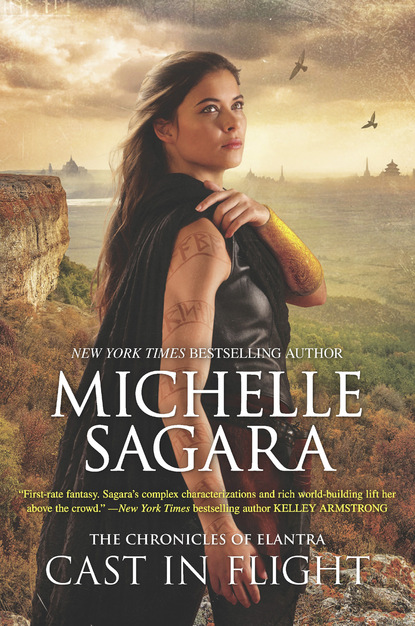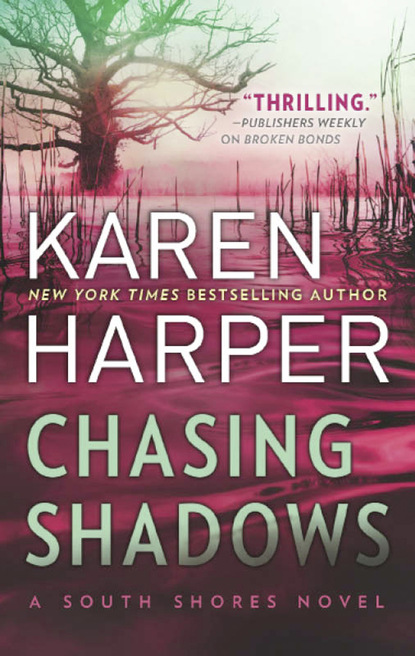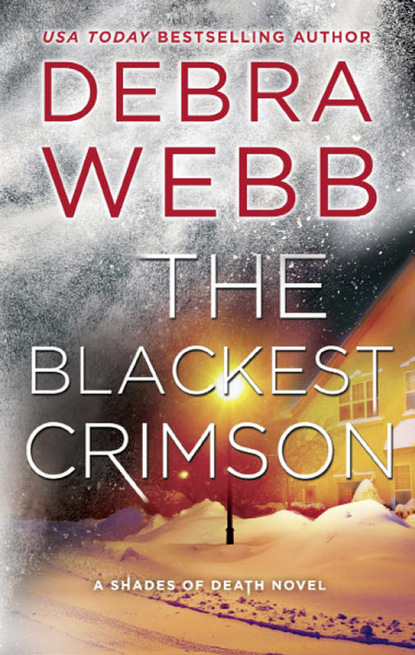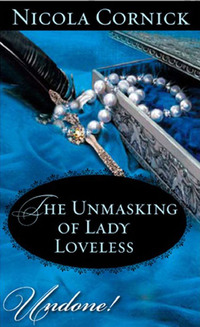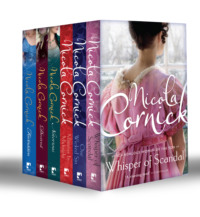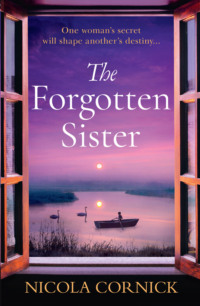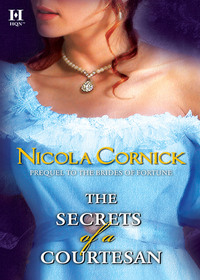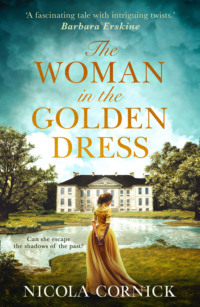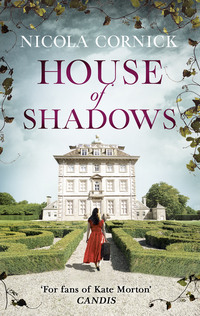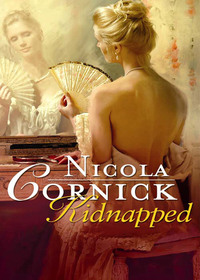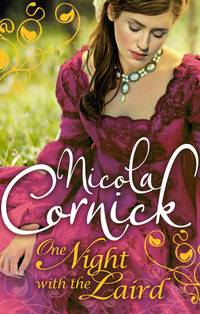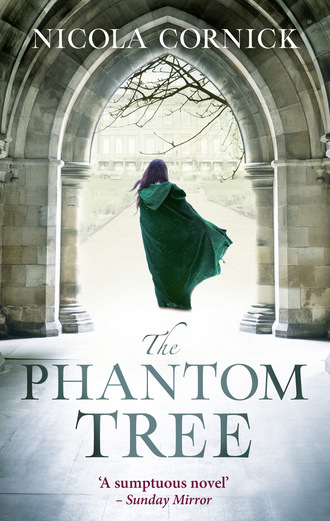
Полная версия
The Phantom Tree

NICOLA CORNICK is a historian and author. She studied at London University and Ruskin College Oxford and works for the National Trust as a guide at the seventeenth-century hunting lodge Ashdown House in Oxfordshire. Her award-winning books are international bestsellers and have been translated into 26 languages.
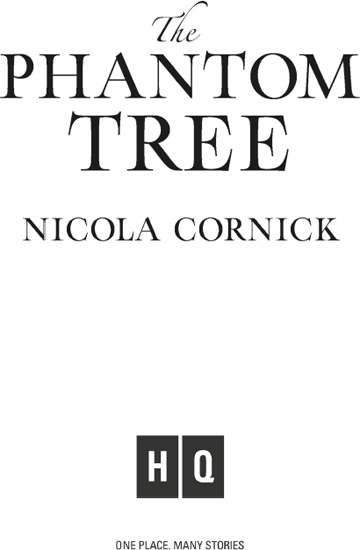
For old friends, and remembering Flagstone Farm andan evening of remarkable plotting.
‘Time, the thief.’
NAPOLEON BONAPARTE
Contents
Cover
About the Author
Title Page
Dedication
Chapter 1
Chapter 2
Chapter 3
Chapter 4
Chapter 5
Chapter 6
Chapter 7
Chapter 8
Chapter 9
Chapter 10
Chapter 11
Chapter 12
Chapter 13
Chapter 14
Chapter 15
Chapter 16
Chapter 17
Chapter 18
Chapter 19
Chapter 20
Chapter 21
Chapter 22
Chapter 23
Chapter 24
Chapter 25
Chapter 26
Chapter 27
Chapter 28
Chapter 29
Author’s Note
Acknowledgements
Copyright
Chapter 1

Alison, Marlborough, Wiltshire, the present day
She saw the portrait quite by chance, or so she thought.
It was eight weeks to Christmas and the rain sodden streets of Marlborough already glistened in the gaudy light of the decorations that were strung from buildings and lampposts. The wind was strong that night and the illuminations swung back and forth scattering shadows and shards of colour over the late-night shoppers below. A Victorian market was being held in the town square and the air was thick with the smell of grilled sausages and hot soup. It made Alison feel hungry.
She put her head down and increased her pace against the fine rain that slicked the pavements. She hated this sort of faux historical event with rosy, smiling stallholders dressed up in costume. Beneath the crinolines and jackets they had on their thermal vests and long johns to guard against the cold. They had waterproof boots and raincoats. They thought this play-acting was fun, a jolly celebration of Christmas past.
She remembered past Christmases very differently; the bone sharp cold, the damp, the chilblains and the hunger that had hollowed her stomach. Even though she had been trapped in the present day for so long now that time had started to blur, some of her past she could remember with utter clarity. Pain, sickness, violence, death, had been a raw reality. Someone thrust a toffee apple under her nose in an invitation to buy, and she shuddered and turned away, picking up her pace along the pavement.
There was a creaking noise high above her, a flap as the wind caught the edge of an inn sign and set it swinging.
The White Hart.
She stared at the image of the majestic white stag as it swayed backwards and forwards in the wind. Its head was raised proudly. Around its neck was a golden crown. It was strange how the most potent and magical of Savernake Forest’s symbols survived into this brash and modern world. There were traces of history everywhere; in street names, on inn signs, in old tracks and ancient hedgerows, buried walls and tumbled gravestones. Scratch the surface and it was there.
Alison had seen a white hart in the forest once. Her cousin Edward Seymour had said that the Queen had wanted to come to hunt it, the hart being the ultimate hunter’s trophy and Elizabeth being a queen who collected such things. Perhaps she had come to Wolf Hall after Alison had left. She did not know. There was no record of a royal visit but then so much fell through the cracks of the past.
The fresh blast of air from the Downs to the north brought with it a softer scent, of mingled herbs and flowers, wild garlic, basil and lavender, taking Alison straight back to a long-lost summer in the garden at Wolf Hall and the smell of sun-warm brick and hot grass. She had not been happy in those days but still the sense of loss and dislocation hit her fiercely and gave her no time to prepare. There was too much that was familiar here in Marlborough—the town, the inn, the memories. She should have realised that coming back to Wiltshire was a bad idea. But she had had so little choice.
Breathe. Accept. Wait.
The wave of dizziness and nausea retreated a little. Alison found she was leaning against a wall between two shops, rather like a drunk steadying himself as he tried to weave his way home late at night. Awareness returned to her, the smooth coldness of a drainpipe against her clutching fingers, the chill sting of the rain and the heavy, greasy smell of the street market.
She was standing in front of a shop she had not seen before. High street shops came and went, of course, and it was a good ten years since she had been in Marlborough, maybe more. She tried not to count most of the time.
The shop was actually an art gallery, all high-tech lighting and huge windows, its modernity blaringly incongruous in the middle of Marlborough High Street’s olde-worlde charm. Most of the paintings Alison could see through the window were equally strident, highly coloured, swirling patterns in oil with huge price tags and no artistic merit in her opinion. Not that she knew much about art. She drew for pleasure and had done since she was a child, but she had no training and no technique to speak of.
To the right of the enormous bow window was a pastoral scene with a spotlight trained on it. It might have been an antique. Alison could not really tell. Below the canvas ran a broad white shelf that stretched along the full length of the showroom. There were a number of smaller paintings displayed there, mainly portraits, and she knew at once that they were old, sixteenth century, to judge from the style and the type of clothing. There was King Henry VIII, painted at the moment his glorious, golden youthfulness was changing into something more watchful and inimical. When Alison had been a child, his name had been used to frighten them all into obedience: ‘Behave yourself or old King Hal will come to get you.’ When she had been young she had had no idea what he had looked like but her imagination had supplied the image of a monster. She had seen hundreds of pictures of him since, of course. The English were proud of their infamous, spouse-murdering monarch. Distance had lent the sort of affection to his memory that had never been felt in her own time.
It was odd seeing Henry now, a relic, a throwback to her past. It unsettled her.
Alison’s gaze travelled on to the next portrait on the shelf, that of a woman, standing, her hands folded demurely in that style so beloved of artists who wanted to persuade the viewer that Tudor womanhood was modest and decorous. The display light cast a shadow across her face. Alison strained closer to see. This was no one as instantly recognisable as Henry and yet there was a familiarity about her. It was a face she knew.
Mary Seymour.
Alison’s breath stopped. There was a tight pain in her chest and a buzzing in her ears. Mary. After all this time.
She had never given up hope. It wasn’t in her nature to despair although she had come very close to it so many times. All the history books—those that mentioned Mary Seymour at all—said that she had died as a child. Alison had known that was not true but she had never discovered what had happened to Mary after she had left Wolf Hall.
‘Help me,’ she had said to Mary all those years ago. ‘Help me to find my son. I’ll come back for him. Leave me word…’
She had not begged, precisely; her relationship with Mary had been too prickly to allow her to show that vulnerability. She had phrased it as an order, but Mary had known. There had been a bargain between them. She had helped Mary escape Wolf Hall and, in return, Mary had promised to help her.
Mary was the key to finding Arthur. She always had been and so Alison had held tenaciously to the belief that one day she would see Mary again.
And now she had.
Suddenly she felt faint with shock, trembling, tears pricking her eyes.
‘Are you all right?’ Someone was addressing her, a woman with a plastic rain hat and an anxious expression. She spoke in the tones of someone who feels obliged to offer help but sincerely hopes it isn’t going to be needed. Alison forced a smile.
‘I’m fine, thanks. I tripped over the edge of the pavement and winded myself for a moment.’
The woman’s sharp gaze scanned her face.
She thinks I’m drunk, Alison thought. She took a deep breath and pinned the smile on tighter. ‘No harm done,’ she said. ‘Thanks for stopping to check.’
‘Well, if you’re sure… The woman was already moving away, duty done.
Alison found that her hand was resting against the windowpane as though reaching out to touch the portrait within. She let it fall to her side and straightened up, pushing open the door and stepping from the dark street into the bright interior of the gallery. For a moment the harsh light dazzled her. Out of it came the figure of a man, summoned by the bell on the door. He was elderly, greying, with a stoop and leather elbow patches on his tweed jacket, but his eyes were bright, vivid blue, and he seemed to crackle with life and energy. Alison felt it at once, that force of personality that some people seemed to project effortlessly, lighting up everything around them.
‘Can I help you?’ He sounded surprised that anyone should have dropped in on a wet December evening.
‘That portrait of a lady,’ Alison said. ‘The Tudor one…’
‘Beautiful, isn’t it,’ the man said.
Alison was taken aback. Had Mary been beautiful? Perhaps she had, although Alison had never thought so. She was the one whom men had admired. She had been curves to Mary’s angles, rose to her sallow. She looked at the portrait again, trying to be dispassionate and to ignore the stirrings of old jealousy. She had never liked Mary. In the beginning she had hated her with a child’s simple hatred. That had grown into a more complicated set of emotions as she grew up, but they had never been friends. They had been too different and too far apart.
The woman in the picture had features that were neat rather than beautiful: a long nose but delicate and not disproportionately so, arched brows above eyes of an indeterminate dark colour, a slight smile on the pursed pink lips. There was only the faintest hint of the hair colour beneath her Tudor gable hood though Alison knew it to be red brown, like her mother’s. Mary’s gown was of sumptuous gold and green velvet embroidered with pearls. She looked to be a woman of substance. There were pearls too on the hood and a space where one was missing. That was typical of Mary. She would not have noticed.
She realised that the man was waiting patiently for the question she had not yet articulated.
‘It’s lovely,’ she agreed. ‘The artist must have been very talented.’
She saw him smile and realised that she had not quite been able to repress the spite. Mary, grown up, or at least on the cusp of womanhood, made her as jealous as Mary the child had once done.
She sighed. None of that mattered. What was important was that Mary had survived. Thrived, in fact, by the look of it. And that was good because Mary was the key. Mary had promised to leave word of Arthur for her, and Mary never broke her promises.
Alison felt it again then, the dizziness that was a mixture of hope and terror. She could not let herself believe that this time she would find Arthur. The crash of despair that had followed each time she had failed had been almost too much to bear.
‘... unidentified.’ She realised that the man had been speaking all the time that she had been lost in the turbulence of her thoughts.
‘Sorry,’ she said. ‘Did you say that the artist has not been identified or the sitter has not been identified?’
Now he was looking at her with concern. She caught a glance of herself in the mirrored wall behind the sales desk, all wet rat’s tails hair and pallid complexion. No wonder he was fidgeting with the display in front of him, fussily moving an ugly ceramic vase two inches to the left whilst he waited for her to take herself off. She could hardly fit the profile of a potential customer.
‘The artist is unknown,’ he repeated patiently. ‘The sitter is Anne Boleyn.’
‘No,’ Alison said. She cleared her throat. ‘Sorry, but that isn’t Anne Boleyn. It’s Mary Seymour.’
‘It is Anne Boleyn.’ The man was still smiling in a rather determined fashion. He was charming. She didn’t deserve such tolerance. ‘Tudor portraits aren’t my forte,’ he said, ‘but I do know that this is a newly discovered portrait of Anne, authenticated only recently.’ He pointed to the background of the painting. It was dark and the shapes drawn there were difficult to decipher. ‘Can you see the box?’ he asked. ‘It has her initials on it.’ Then, as Alison frowned, leaning forward to peer into the depths of the picture: ‘AB. For Anne Boleyn.’
The box. Her box.
Alison could see it, now that he had pointed it out. It sat on a ledge to the right of Mary’s head, only the very faintest sheen on its patina showing in the dark background. It would have been easy to miss, this clue, this promise.
‘See, Alison, I did not forget you. I have your workbox here, safe for you.’
She looked back at Mary’s painted face, at the slight sideways glance that led the viewer’s gaze to the wooden box and the bold initials. It had been made of walnut, she remembered, worn smooth over the years by the touch of her fingers. She had loved that box, storing any number of inconsequential items in it: her thimble, a length of ribbon, and a scrap of lace. She might have kept Edward’s love notes in it had he written her any, but he had not.
‘My godson could tell you more about it,’ the man said. ‘He was the one who discovered the portrait. He’s written a book about it. He’s speaking at the festival tomorrow night.’
‘Festival?’ Alison said. She tried to get a grip. She felt strange, jittery. Although the shop was almost aggressively modern she felt closer to the past than she had done in years, disorientated and confused.
‘There’s a literary festival running all week,’ the man said. ‘Adam—my godson—is talking about the painting and about the Tudor court.’ He nodded towards Mary, serene under the dazzling lights. ‘It’s all very exciting. Apparently, there aren’t many portraits of Anne Boleyn.’
‘And this isn’t one of them, I’m afraid,’ Alison said. Rain was seeping down her neck, making her shiver. Or perhaps the shivers were coming from elsewhere, somewhere far deeper inside.
There was a pile of flyers for the talk spread in an artful fan on the white shelf beside the portrait. She bent to pick one up.
‘Adam Hewer,’ she read. ‘“Historian author and presenter, unveils the face of Anne Boleyn. Don’t miss this exciting event, exclusive to the Marlborough Festival.”’ There was a picture of a book cover for Discovering Anne Boleyn and a photograph of the author:
Adam.
Alison sat down abruptly in a flimsy-looking white plastic chair that she thought was probably part of an art installation. It creaked.
‘You look quite done up,’ the gallery owner said kindly. ‘Can I get you a cup of tea? It helps, you know.’
‘I’m fine,’ Alison said automatically. ‘Just a bit tired.’
Odd that it should be Adam, of all people, who should be the one to lead her to Mary. Or perhaps it was not odd at all. That sense of time shifting, the lure of the brightly lit window, the portrait… It had not happened by chance. When it came to fate and time she did not believe in coincidence.
She needed to think. She had to get away from the bright lights that were making her head ache with the buzz of too many discoveries, made too quickly. She dropped the flyer back down on the shelf where the edges curled up slightly in the heat of the lights.
‘Thank you,’ she said. ‘You’ve been very kind but I’d better go now.’
‘Alison?’
Adam’s voice stopped her when she was two steps away from the door. She turned slowly. It had not occurred to her that he might be there, listening, and now she felt a prickle of annoyance that he had not made his presence known sooner.
He looked older than she remembered, but not by much. It was a good ten years since they had met but annoyingly Adam seemed to have aged better than she felt she had. He was tall, well built, with brown eyes that were a startling contrast to his fair hair, and had an air of restless energy that was familiar to her. With a sudden tug of the heart she realised he had become the man she had glimpsed in the boy she had known.
After they had split up, she had shied away from following Adam’s career, although she did know that he was one of the new generation of TV historians, celebrity academics who travelled to exotic places to present the past in new and vibrant ways. As a breed they were young, good-looking, photogenic and formidably bright. Apparently, they made history accessible. That had always felt a painful irony to her. History was not accessible at all; at least she did not find it to be.
Adam came out of the office at the back and into the bright lights of the gallery, casual, hands thrust into the pockets of his trousers. ‘I thought it was you,’ he said. ‘How are you?’
He was smiling. Alison remembered the public-school charm, so like that of his godfather, which could smooth over the most awkward of encounters. It had bowled her over when first they had met reminding her painfully of the life she had left behind. She had clung to something that felt familiar in an alien world only to find that there was no similarity between Adam and the men she had known in her past.
Now she felt a disconcerting echo of that teenage confusion and she was cross with herself because there was a flutter in the pit of her stomach and a whisper of what might have been. Stupid, because what might have been had already happened: a youthful affair that had burned itself out.
‘I’m good, thanks,’ she said, matching his effortless courtesy with what felt like abject gaucheness. ‘Just down here for a few days. I work in London now. But you—’ She gestured awkwardly towards the flyers. ‘You’re doing well. TV shows, writing…’
She knew she sounded inane but he merely inclined his head. ‘Thanks.’
‘It’s what you always wanted.’
She saw a flicker of expression in his eyes then, gone too quick to read. He said nothing. Alison was starting to feel hot and anxious. It had been a stupid thing to say. She knew nothing of what Adam wanted these days. She had barely known him ten years before and if she had realised she was going to meet him again today she would have been better prepared.
Butterflies fluttered again, trapped, beneath her breastbone. She needed to give herself some time and space to think. Adam’s godfather—in an unusual breach of courtesy, Adam had not introduced him—had moved away, pretending to rearrange the paperwork on the sales desk, but she knew he was listening, wondering.
‘Well…’ She waved a vague hand towards the door. ‘I really must go. Good luck for the talk tomorrow. Not that you’ll need it, of course.’
‘I heard what you were saying,’ Adam said, ignoring her words. ‘You don’t think this is a portrait of Anne Boleyn.’
Alison felt a sharp pang of disappointment, followed swiftly by a sort of anger at her own obtuseness. This was why Adam had come out to speak to her. It was not because he had wanted to see her. It was because she had raised questions about his work. The anger pricked her into speech.
‘It’s a portrait of Mary Seymour,’ she said, ‘the daughter of Katherine Parr and Thomas Seymour.’
Adam paused for a moment, studying her face. There was a tight frown between his brows now. Alison waited for him to contradict her. She was already regretting her words; she should have gone back to the hotel, thought about what had happened, decided on what she should do next, rather than blurt out a statement that would only make Adam want to know more.
‘I thought Mary Seymour died as a child?’ Adam said.
Kudos to Adam, Alison thought. Most people had never heard of Mary Seymour, let alone knew what had happened to her. She did not know herself. Until tonight her search for Mary had drawn a blank. She had hunted her through books, archives, museums and galleries and had found next to nothing. Mary’s had been a life almost completely lost from history. But the one thing that Alison did know was that Mary had not died as a child.
She shifted, aware of Adam’s acute gaze resting on her. ‘She definitely survived into adulthood,’ she said.
‘I assume there is evidence to support that?’ Adam leaned against the edge of the sales desk and folded his arms. His tone was not disbelieving, but there was more than a hint of challenge in it. Alison felt a flutter down her spine. This was precisely the sort of conversation she should have avoided until she got her head together.
‘I’ve seen other portraits of Mary,’ she said. ‘I know a bit about her. I researched her for some work I was doing…’
She could sense Adam’s puzzlement. One thing he did know about her was that she was no historian. When they had met at summer school in Marlborough, she was a sullen teenager with a sponsored place on a tourism course. He had just accepted an offer to read History at Cambridge.
‘Genealogy,’ she said quickly, forestalling his next question, making it up as she went along. ‘I was looking for some stuff on my family tree and found Mary. There’s a distant connection between us.’
She felt as though she was digging herself in deeper rather than out.
‘Genealogy,’ Adam repeated. His gaze was narrowed intently on her now. He looked as though he didn’t believe a word. ‘You never talked about your family,’ he said slowly. ‘You told me you couldn’t leave them behind fast enough.’
‘That’s how I felt at eighteen,’ Alison said. ‘People change.’ She fidgeted with the strap of her bag. ‘Look, forget I mentioned Mary at all. You’ve got a talk and a book…’
‘And a TV programme,’ Adam said dryly. ‘All based on the premise that this is a portrait of Anne Boleyn not Mary Seymour.’
Alison felt a flicker of sympathy for him. The discovery of a new portrait of Anne Boleyn was quite a coup and would bring Adam lots of publicity. She had planted a seed of doubt in his mind now and even though he knew she was not a professional historian, he could not risk making a highly visible mistake.


